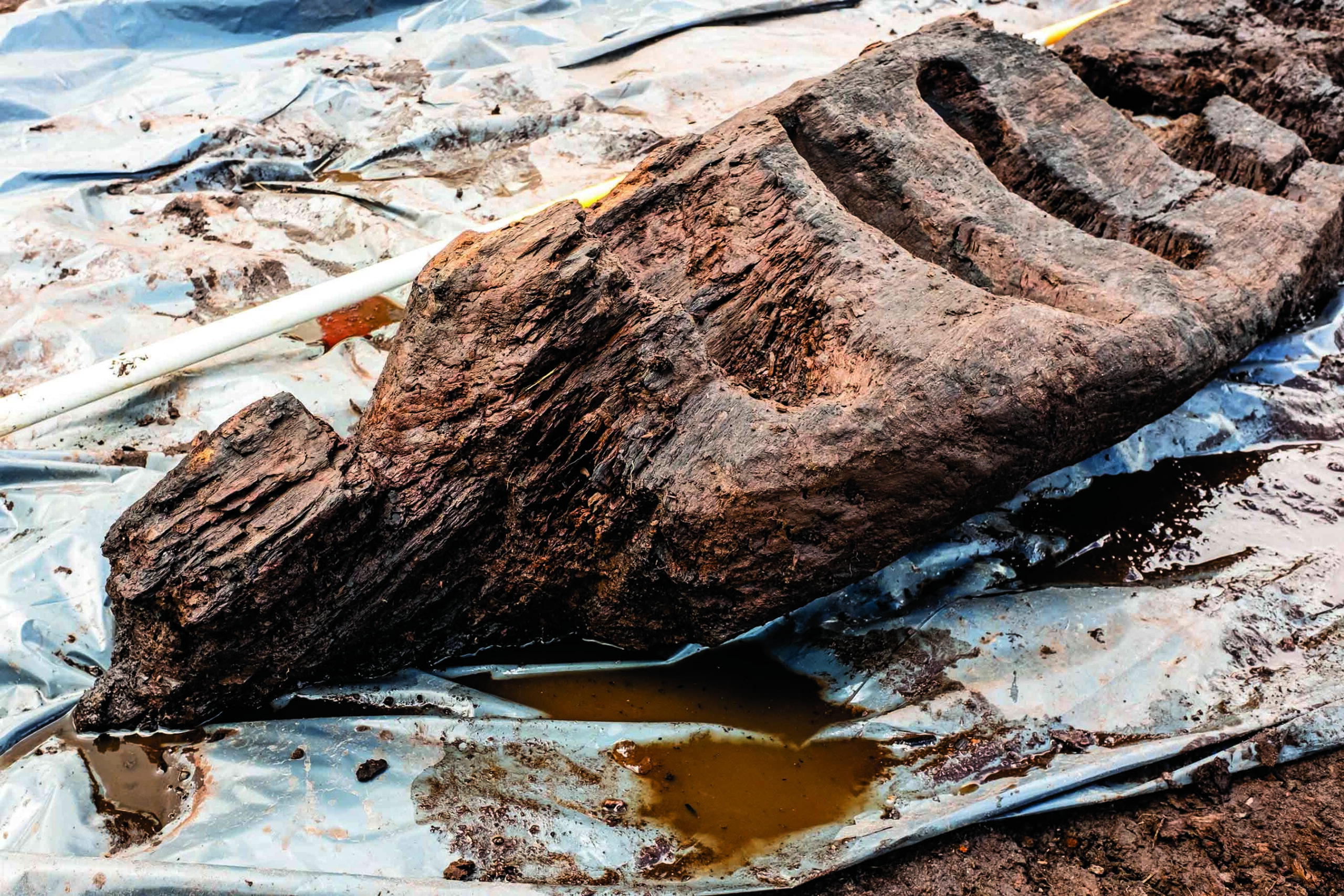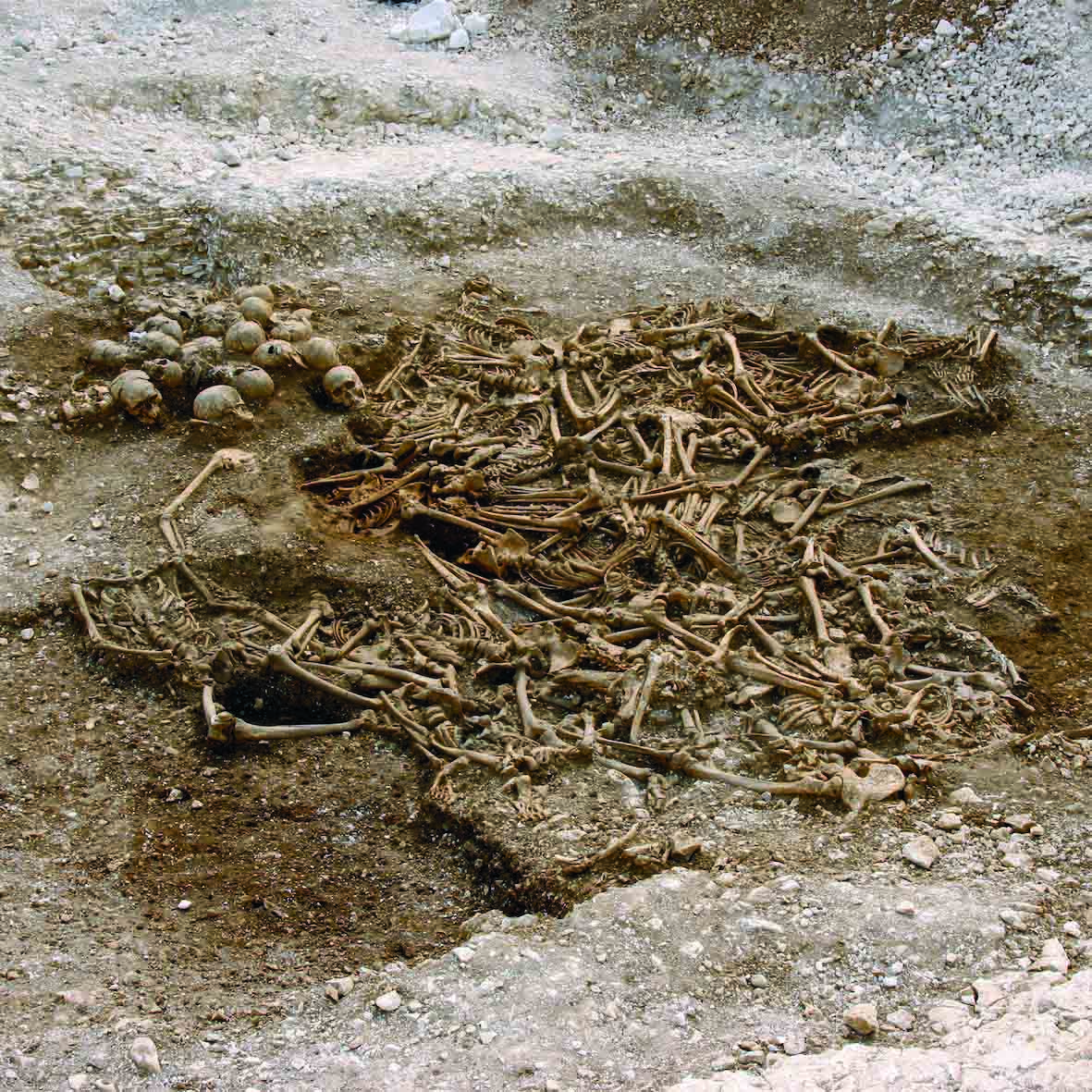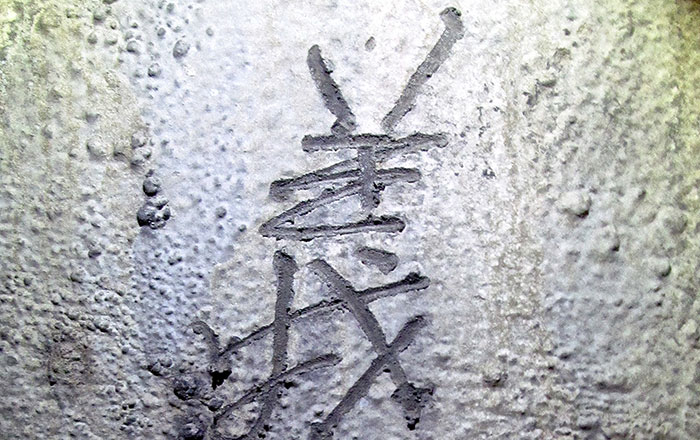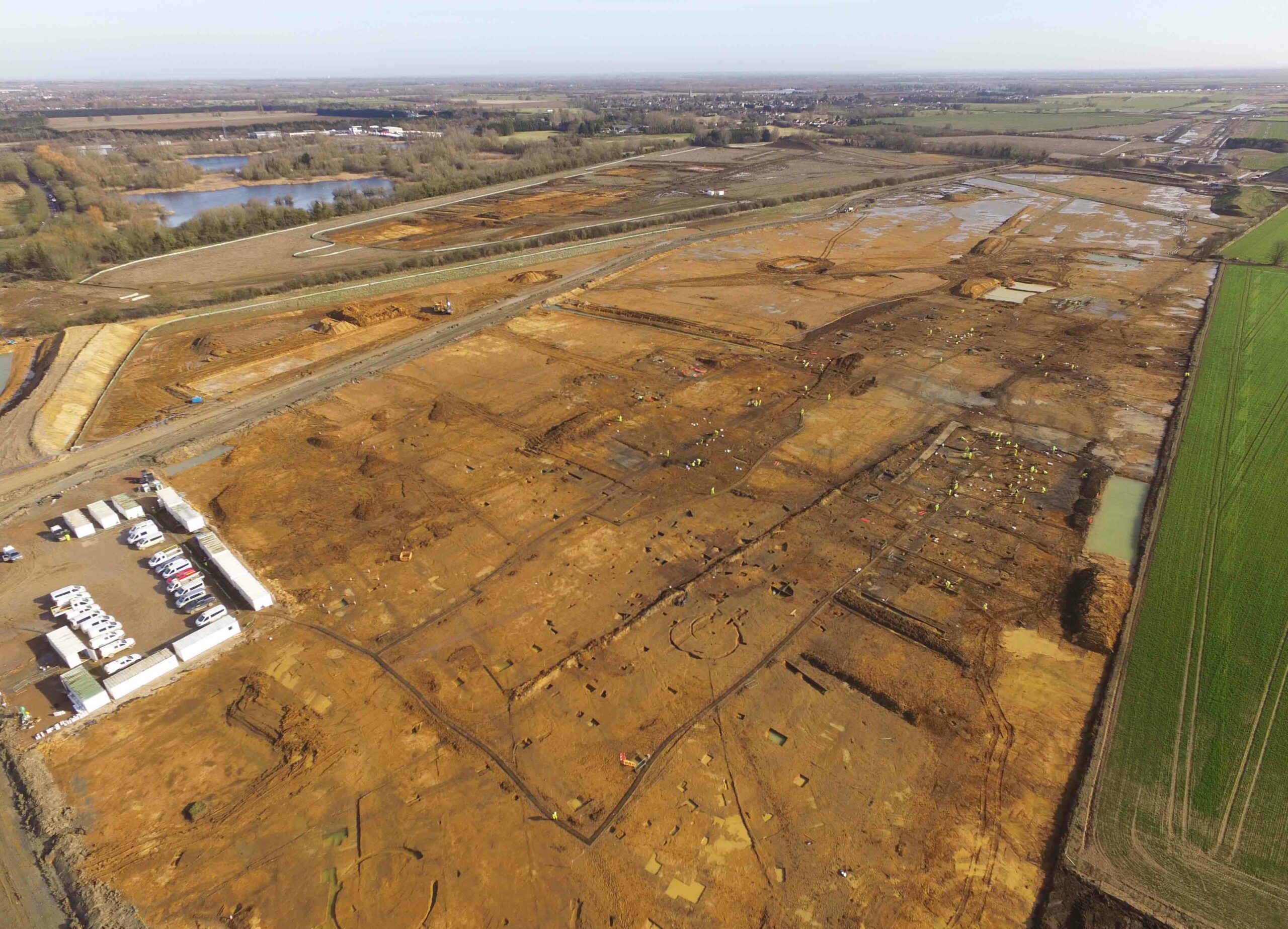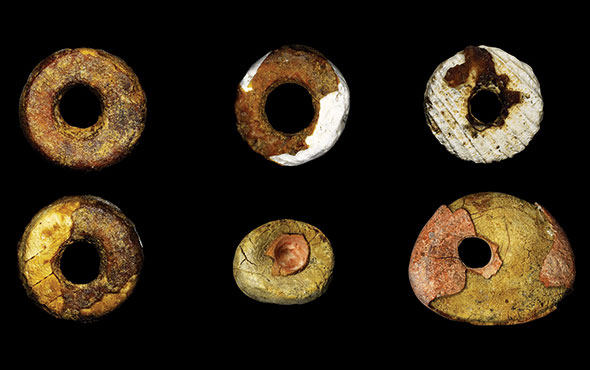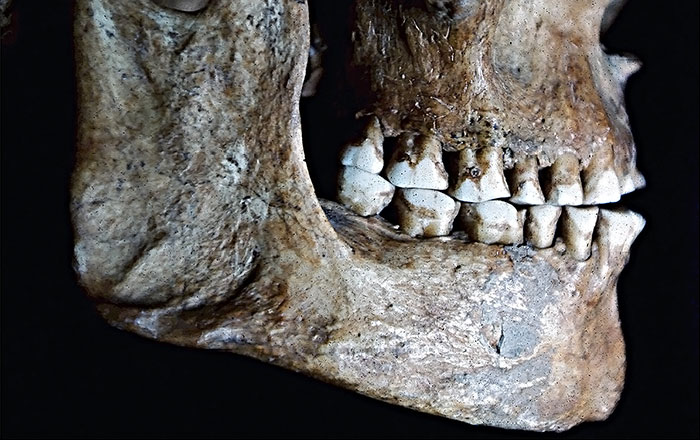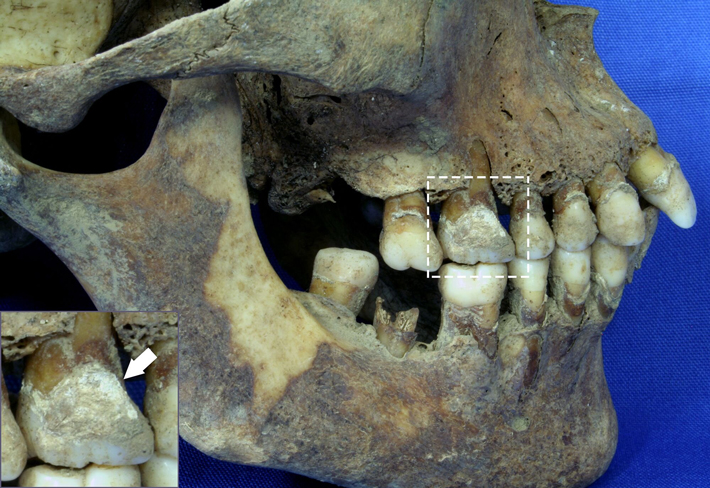
EDINBURGH, SCOTLAND—According to a report in The Belfast Telegraph, analysis of dental plaque obtained from the teeth of 42 people buried in mass graves at Ireland’s Kilkenny Union Workhouse in the mid-nineteenth century has shown that the individuals' diet was consistent with historical records of what people ate during the Great Famine, which resulted in the deaths of more than 1 million people. Many Irish laborers were thought to have subsisted on a diet of potatoes and milk, supplemented with eggs and wheat when possible. Researchers led by Jonny Geber of the University of Edinburgh found evidence of a diet based on corn, with some oats, wheat, and milk, in the calcified plaque from the teeth of most of the individuals buried at the workhouse. Traces of egg protein were detected in the plaque of just three people. Geber explained that Ireland imported corn, known as Indian meal, from the United States as a relief food for the starving. To read about the potato late blight that caused the Great Famine, go to "World Roundup: Ireland."



